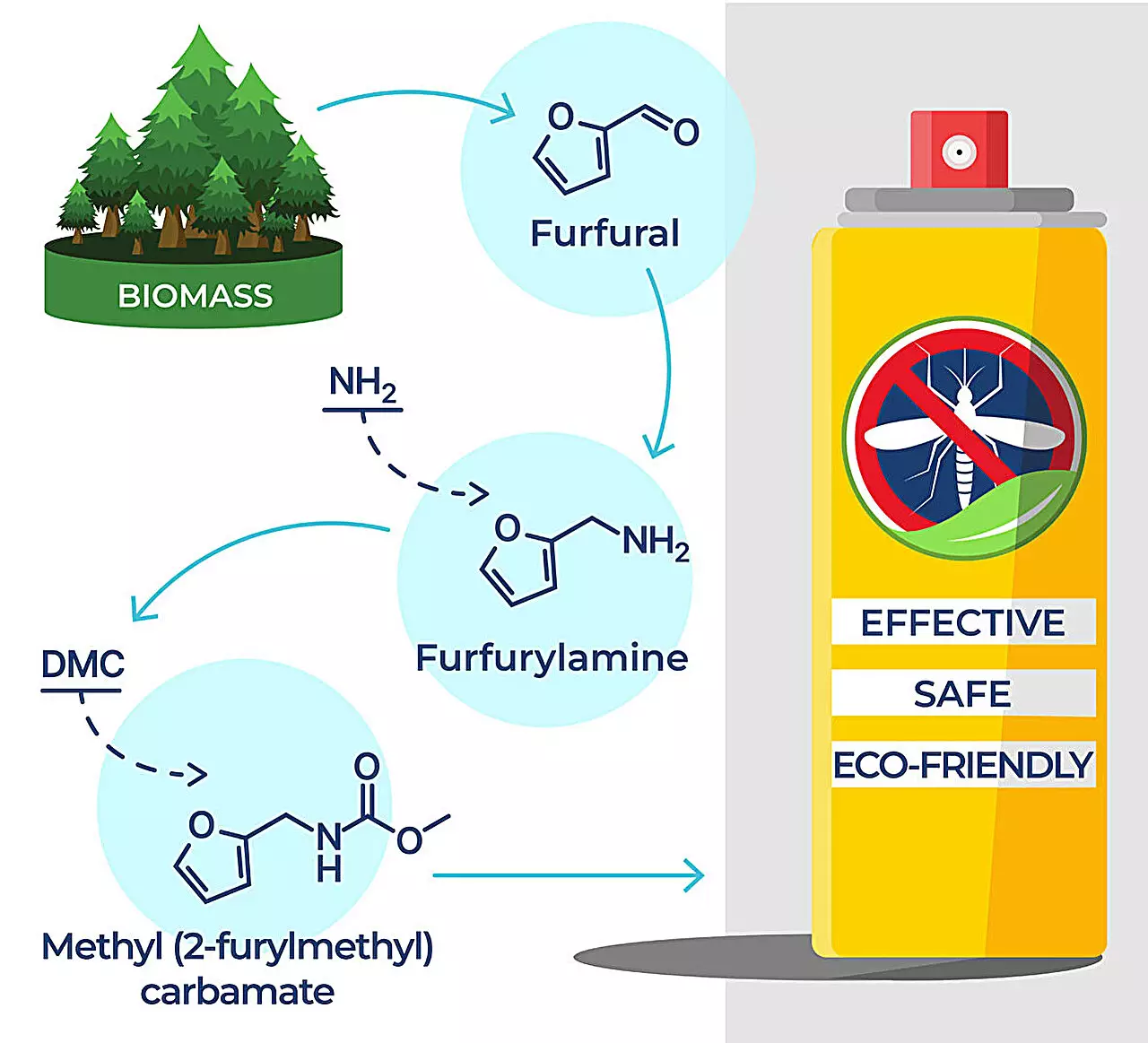In a world where the population is projected to soar to 8.2 billion by 2024, the challenge of feeding this ever-increasing number of mouths without compromising environmental health takes center stage. Pesticides, the stalwart defenders of crops, have traditionally come with a double-edged sword: while they combat pests effectively, they often inadvertently pose dangers to non-target species and ecosystems. However, the innovative research team at the University of Delaware is pioneering a new wave of target-specific and ecologically friendly insecticides that are poised to revolutionize agricultural practices.
Instead of relying on conventional methods that utilize harmful chemicals usually derived from fossil fuels, the UD team focuses on biomass—materials such as wood pulp, straw, and corncobs. These are typically discarded as waste. By transforming this biomass into active insecticidal ingredients, the researchers not only contribute to a sustainable future but also promote a circular economy. This shift in perspective illustrates the potential for waste materials to be repurposed into valuable chemical solutions.
The research, published in *ChemSusChem*, showcases how the team harnessed plant-based atoms to create novel chemical structures designed for pest control. Their efforts exemplify an innovative synthesis pathway that could redefine the environmental impact of agriculture.
The researchers envision their bio-based molecules as “bridging molecules.” They serve as an intermediary between the toxic chemical compounds currently dominating the market and a new generation of environmentally safe alternatives. According to Sunitha Sadula, the lab manager, the overarching goal is to minimize or even eliminate harmful chemicals from our food supply and the ecosystems that sustain us.
Traditionally, pest control strategies have relied heavily on synthetic pesticides that often have harmful residual effects. In contrast, this new methodology ensures that the ingredients developed are both effective against pests and significantly less harmful to the environment.
Targeting Insect Pests Effectively
The research involved testing promising chemical compounds, such as vanillin and furfural, against the lesser mealworm beetle—a common agricultural pest. The remarkable finding was that these bio-derived molecules displayed comparable effectiveness to conventional insecticides, achieving nearly identical mortality rates for the pests in question. This discovery opens the door to a new era of greener pest management solutions without sacrificing efficacy.
The implications of this research are profound. Researchers Michael Crossley and Tejas Goculdas emphasized that previous attempts to create similar bio-based pesticides had not achieved the level of potency seen in traditional pesticides. Thus, the UD team’s method stands apart by achieving almost complete effectiveness through a sustainable process.
The benefits of using biomass extend beyond just pest control efficacy. The sustainability of these new insecticidal ingredients is amplified by their dependence on renewable resources. With approximately 991 million tons of dry lignocellulosic biomass available in the United States each year, this research underscores the potential for large-scale, environmentally-responsible production of chemicals.
The technoeconomic analysis conducted by the team indicated that their furfural-based insecticides are significantly cheaper—two to four times lower in cost—than many current commercial pesticides. This affordability has the potential to empower farmers, making eco-friendly practices economically viable.
One of the more surprising insights from the research was the safety of furfural-based compounds for aquatic organisms. The chemical structure developed by the UD team demonstrates a preference for aquatic environments, which means it is less likely to be absorbed by plants and animals. This characteristic not only simplifies the cleaning process for produce but also mitigates pollution risk to the aquatic ecosystems surrounding agricultural lands.
Future Prospects: A New Paradigm
The University’s research team has filed for an international patent, which signifies their recognition of the innovation’s potential impact. Crossley’s remarks about transforming “trash into a useful insecticide” speak to an inspiring vision where waste materials are recycled into new, beneficial products. The approach taken by the UD team aligns with the broader movement towards green chemistry—crafting solutions that sustain both agriculture and the environment.
The trajectory set by the University of Delaware’s research holds promise not only for pest control but for a paradigm shift in how society approaches chemical production. As scientists continue to explore the vast potential of renewable resources, it is clear that the future of agricultural sustainability may rest in harnessing the very materials deemed wasteful, creating a circular economy that benefits both the planet and its inhabitants.

